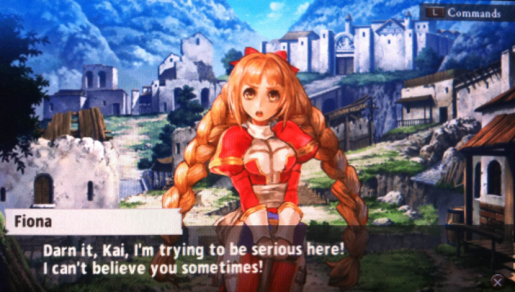Multiple endings
Instead of merely allying with one army’s viewpoint during the story, Ragnarok Tactics expands greatly upon this trope and instead gives the players two factions vying for control of the country while the third group is a group of villagers and mercenaries just trying to make sense of it all. After each story battle, players have the option of doing the next story battle at a number of different locations, each under the control of a different faction. Seeing each battle unfold with another faction helps to make the story feel more dynamic and give justification for each kingdom’s reasoning for taking up arms.
Once the game is finished for the first time, it doesn’t end there. After the credits roll, the AIZ (Another If Zapping) system comes in to play. This awkwardly named AIZ mechanic allows players to explore different story branches and outcomes by investing AIZ points. By doing so, characters can revisit a different view to a given story arc while retaining previous experience and skills. It’s a unique twist to the story that definitely helps it open up once the game is finished for the first time.
NOT
Dated presentation
Despite its lush visuals, Ragnarok Tactics feels like a game that came out ten years too late. If this game were around during the prime of Tactics Ogre and Final Fantasy Tactics, it would have easily competed for being the most visually appealing of the bunch. That being said, the gameplay feels like it’s locked into the same time period. Many of the game’s core mechanics feel like they were not-so-subtly inspired from other strategy RPGs. The utilization of unlocking cross-class skills by way of the Overdrive ability is unique in its own way but still not utilized to its full potential. With only a handful of skills that transfer between classes, it’s a matter of trial and error to find the right combination most of the time. The occasional conversation with random townsfolk can reveal some of these combinations, but it’s up to the player to discover the majority of them.
Slow Pace
Ragnarok Tactics serves as a reminder of the days when players had the time to hours at a time on side battles just to get strong enough to advance the story. Expect an average mission to last around twenty minutes, not counting the potential time to restart and begin anew if any one of your story characters is knocked out. Between each lengthy story mission and the nearly-mandatory grinding and skill experimentation, hours can just fly by without even feeling like you’ve accomplished anything.
The fights themselves take longer than they should by way of a reactionary AI. Many enemies won’t even start moving until a character wants within their field of attack. Usually this consists of sending out one unit just inside the enemy’s attack radius before pulling him back into the main corp, bringing the enemy along with him. Doing this with more than two enemies at a time will typically result in a quick death, as nearly any enemy in the game can tear into a single player character in only a turn or two.
VERDICT
Ragnarok Tactics is a roleplaying game that simply plays it too safe. With very few unique aspects beyond the way the story unfolds, it’s a bit of a letdown to see a strategy game without enough character to stand all on its own. The whole experience feels like the Ragnarok franchise is just trying to tag along with the other popular games. “Look, I’m Monster Hunter!” “Look, I can be Final Fantasy Tactics too!”
With nothing truly fresh to bring to the SRPG genre, Ragnarok Tactics comes across as a solidly mediocre title. It stands as a worthy farewell to both the days of PSP games as well as the dated model for strategy role playing games. Fans of the genre would feel right at home playing Ragnarok Tactics, but people unfamiliar with strategy games would be better off finding their beginning elsewhere.
[Editor’s Note: Ragnarok Tactics was reviewed on the Sony PlayStation Portable. The game was provided to us by the publisher for review purposes.]



